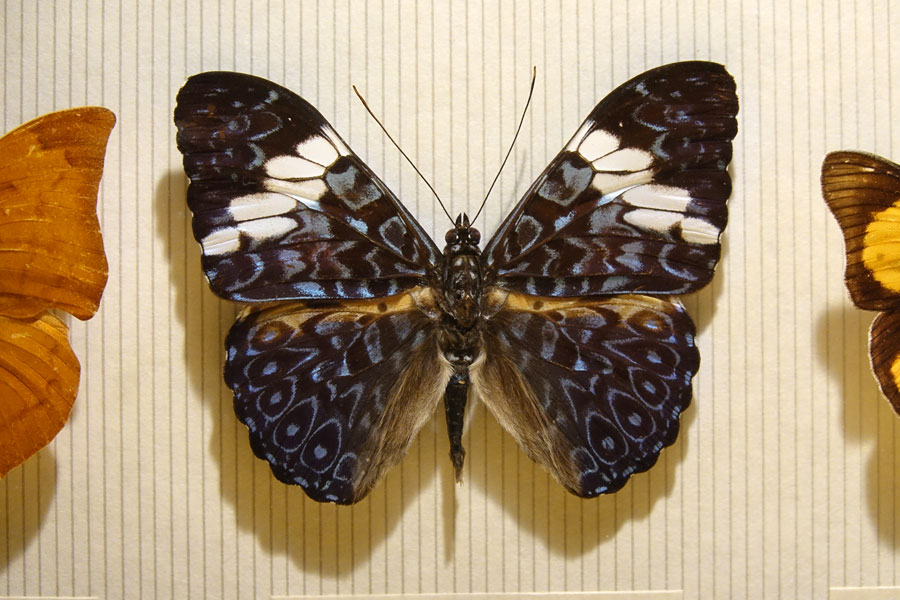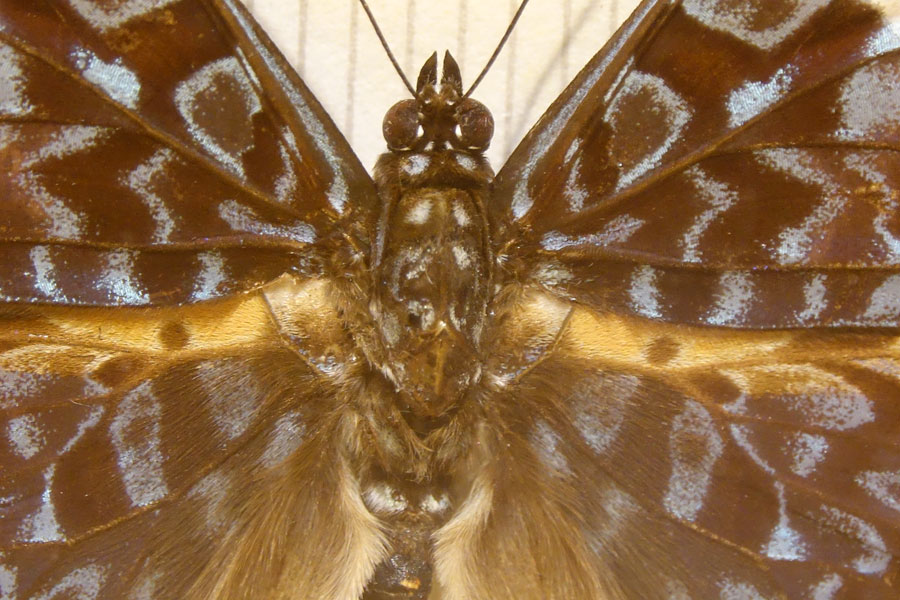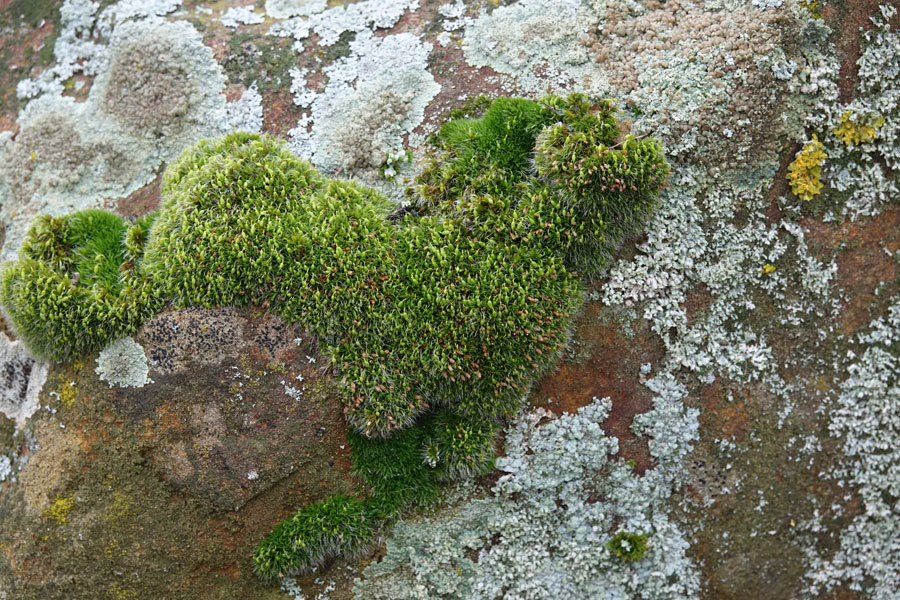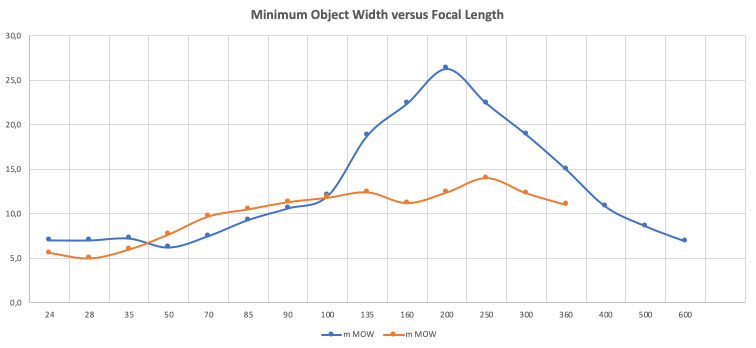Sony RX10 M3: Close-Up Introduction and First Samples
Introduction | Investigations | Sample Photos | References
This page and its companion pages discuss the macro, or better, close-up, abilities of the Sony RX10 M3. Although the camera has a macro mode (allowing shots from 3 cm), I would not call these photos "macros" and therefore use the term "close-up."
This page investigates the minimum object width for the Sony RX10 M3 under various conditions (in my opinion this tells you more than the maximum magnification) and presents sample photos that demonstrate the camera's close-up abilities.
Note: This page is also valid for the Sony RX10 M4, because both cameras have identical lenses.
Introduction
Ricoh's small sensor cameras, including the "old" GRs, are extremely good macro shooters. The Ricoh R and CX series as well as the Ricoh GXR S10 and particularly, P10 camera units demonstrate what is possible (see elsewhere on this site). Having a 1" sensor (size: 13.2 x 8.8 mm), the Sony RX10 M3 cannot really compete with these small-sensor cameras. On this page, I determine the minimum object width for the camera at various focal lengths, calculate its magnification, and provide some sample close-up photos.
Investigations
Sony does not disclose the maximum possible magnification for the RX10 M3 in macro mode. I therefore took a lot of test shots. In summary, at the telephoto as well as at the wide end you get a minimum object size of a little less than a credit card (or four times the size of a 35 mm film slide).
With Clear Image Zoom, you get an even smaller minimum image width of about 36 mm (the size of a 35 mm film slide) at the longest focal length - however, at the expense of image quality.
Test Shots
I do not present my ruler test photos here, because there are too many. I just present the numbers that I extracted from the photos.
Minimum Object Width
When taking the test photos, I tried to find the minimum distance and thus, the minimum object width, for some "standard" focal lengths. Without showing the respective photos here, I list the minimum object widths for these focal lengths in the table below:
| Focal Length (equiv.) |
Distance from Sensor Plane* |
Minimum Object Width |
Max. Aperture |
Rockwell Macros** |
Plausibility Check** |
|
| MF | AF (DMF) | Clock Width | 90/Clock Width | |||
| mm | cm | cm | cm | f | cm | |
| 24 | 18 | 6.8-6.9 | 7.1-7.2 | 2.4 | 12.3 | 7.3 |
| 28 | 18 | 6.9-7.1 | 6.6-7.1 | 2.8 | ||
| 35 | 18 | 6.8 | 7.0-7.4 | 3.2 | ||
| 50 | 18 | 6.2-6.3 | 6.1-6.3 | 3.2 | 15.0 | 6.0 |
| 70 | 22 | 7.6 | 7.3 | 3.5 | ||
| 85 | 28 | 9.2 | 9.5 | 3.5 | ||
| 100 | 36 | 11.4 | 11.4-12.7 | 4.0 | 7.8 | 11.5 |
| 135 | 69 | 18.9 | 18.8 | 4.0 | ||
| 200 | 140 | 26.6 | 26.0-26.6 | 4.0 | 3.4 | 26.5 |
| 300 | 150 | 18.9 | 18.9 | 4.0 | ||
| 400 | 110 | 10.8 | 10.7 | 4.0 | 8.0 | 11.25 |
| 500 | 96 | 8.6 | 8.6 | 4.0 | ||
| 600 | 92 | 6.9 | 6.8 | 4.0 | 11.5 | 7.8??? |
*) According to the camera; note that the distance from the front of the lens body (not the lens) is much shorter (the distance between the focal plane and the front of the lens body differs depending on the focal length).
**) To check my minimum object values for plausibility, I used macro photos of a clock taken by Ken Rockwell and measured the clock width at each offered focal length as well as the image width (20.7 cm), all on the laptop screen. In order to get numbers that I can compare with my minimum object width values, I simply divided the number 90 by the clock width. These numbers correlate fairly well with my minimum object width values. Of course, I do not know how exact Rockwell did his test with respect to the minimum distance. So there is some variation. I think that at 600 mm he did not get quite as close as possible...
These are just coarse numbers, because I did not perform "controlled" tests, and it was sometimes difficult to perform the test. So there are variations in the numbers, but I think that the overall performance can be extracted from these numbers.
On another page, I consolidated these numbers a little bit and added Panasonic TZ202 data to be able to create diagrams from them and to compare the close-up behaviors of both cameras. Both diagrams show my mean minimum object width values across the focal length range.
Do not take all this too seriously, but a few things can be easily read from these diagrams and the tables above. Here, I comment only on the RX10 M3:
- There does not seem to be much difference in the camera's macro performance between 24 mm and 50 mm (equiv.)*, and up to 70 mm, there is little deterioration.
- Above 70 mm things change dramatically, and between 135 mm and a little less than 400 mm, the macro performance of the RX10 M3 is less impressive, to say the least.
- The performance improves again, however, between 400 mm and 600 mm, and at 600 mm, it is once again at the level of the wide end of the lens, which I find quite remarkable.
*) When I, however, later hit on close-up shots that Ken Rockwell presents on the Internet that were taken at 24 mm and 50 mm, I found the difference in size quite remarkable and considered that I had made errors when measuring the minimum object distance. New measurements, however, confirmed my values and I therefore took a quick-and-dirty real-life photo (of poor quality). And indeed, here, too, the difference looks bigger than the numbers as such suggest (and you do not cast a shade on the object when using 50 mm, which is quite an advantage):
 |
 |
|
Close-up with a focal length of 24 mm (equiv.) |
Close-up with a focal length of 50 mm (equiv.) |
Photos: Comparison of close-ups at 24 mm and 50 mm focal length (equiv.)
A few more remarks:
- The RX10 M3 lens has its "sweet spots" for close-up shots at
50 mm and 600 mm.
Thus, I can confirm Ken Rockwell's suggestion to shoot close-ups either at a focal length of 50 mm or 600 mm (equiv.) if magnification is important for you. - The close-up behavior of the Sony RX10 M3 between the focal lengths of 100 to nearly 400 mm is odd to say the least. It seems to reflect the complexity of the lens. Usually, it is not a problem to magnify less, but for interior shots, the magnification at 400 mm may be too much at 1 m distance while you cannot step back to use a minimum distance between 1.2 m and 1.5 m as is required for focal lengths between 200 mm and a little less than 400 mm. Perhaps focal lengths between less than 160 mm and 70 mm to 85 mm can help you out here and close the gap...
- The smallest minimum object width that the RX10 M3 can achieve is a little
more than 6 cm at 50 mm; above 400 mm, the minimum object width decreases
from nearly 11 cm to nearly 7 cm. Thus, beginning with 400 mm and beyond,
the RX10 M3 really shines.
With a minimum object width of about 7 cm at 24 mm and 600 mm and of 6.2 mm at 50 mm (equiv.), the RX10 M3's macro performance is not outstanding, but very acceptable. Using Clear Image Zoom, it can be improved at the long end to about 36 mm, that is, to what we would call a 1:1 magnification ratio for full-frame cameras (but it is not if we apply the formula above...).
Minimum Object Width and Digital Zoom (Clear Image Zoom)
As written above, with Clear Image Zoom (one of the two digital zoom modes available for the RX10 M3), you can cut the minimum object width in half if you zoom to 1200 mm (equiv.). That is, you can achieve a minimum object width of about 3.6 cm this way. But what does this mean in practice? To answer this question, I will have to do a few more test shots.
Calculating Maximum Magnification
The above data allows me to calculate the maximum magnification for the Sony RX10 M3 (adopted from dkpeterborough, L-Camera-Forum):
- Sensor width / object width = 13.2 [mm] / object width [mm]
- 13.2 [mm] / 72 [mm] = 0.183 => 1:5.5
And for 50 mm (equiv.), which offers the largest magnification, I will assume a minimum object width of 62 mm:
- 13.2 [mm] / 62 [mm] = 0.213 => 1:4.7
These results are not impressive, but for close-up shots of flowers and larger butterflies, the close-up abilities of the Sony RX10 M3 are still useful, as the samples below demonstrate. One should also keep in mind, that, in my opinion, these numbers are only useful for full-frame cameras. I think that the minimum object width is a better measure for evaluating the macro performance of a camera regardless of its sensor size or film format.
Close-Up Samples - "Sweet Spots"
The following close-up sample demonstrate the "sweet spots" of the lens for taking optimal close-ups (the maximum width of the butterfly Hamadryas belladonna is about 6.8 cm):
 |
 |
|
50 mm (6.1-6.3 cm) |
85 mm (9.2-9.5 cm) |
|
 |
 |
|
400 mm (10.7-10.8 cm; approx. 90 cm from lens) |
600 mm (6.8-6.9 cm; approx. 75 cm from lens) |
|
 |
 |
|
1200 mm, Clear Image Zoom (digital zoom; 3.5 cm; approx. 72 cm from lens) |
Ditto, for comparison purposes |
Sample Photos
Here is a selection of some early close-up shots. I take mostly close-up photos at a focal length of 500 - 600 mm (equiv.). Therefore, the following demonstration photos were more or less taken at these focal lengths. In addition, the photos were not taken at the shortest possible distance, but at various distances, according to the needs of the photographed objects.
 |
 |
|
 |
 |
|
 |
 |
|
 |
 |
|
 |
 |
|
 |
 |
|
 |
 |
|
 |
 |
|
 |
 |
|
 |
 |
|
 |
 |
References
- Alexander S. White (2016). Photographer’s Guide to the Sony DSC-RX10 III. White Knight Press, Henrico, Virginia (ISBN: 978-1-937986-54-4 (paperback), 978-1-937986-55-1 (ebook))
- Henning Fuchs (2016). Sony RX10 III - Die fehlende Anleitung. Amazon CreateSpace Independent Publishing (ISBN: 978-1537703459 (paperback)).
- Michael Nagel (2018). Sony RX10 IV. Franzis Verlag: Haar bei München (ISBN: 978-3-645-60603-5)
| 13.06.2023 |

